1. Meaning:
metal, gold, money
2. Readings:
- Kunyomi (訓読み): かな-、 かね、 -がね
- Onyomi (音読み): キン、 コン、 ゴン
- Japanese names: かん、 きむ、 こ、 この、 ん
- Chinese reading: jīn
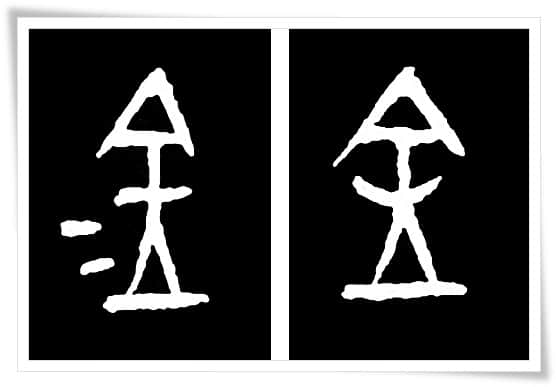
3. Etymology
金 belongs to the 象形文字(しょうけいもじ, shōkeimoji i.e. set of characters of pictographic origin).
The kanji 金 is a pictograph of copper ore cast in a mould. It can also represent one of the 五色の金 (ごしきのかね, go shiki no kane, i.e. “metals of the five colors). The “five metals” were already discussed in the 說文解字 (shūo wén jiě zì, i.e. “Explaining Simple (Characters) and Analyzing Compound Characters”) from the 2nd century C.E., compiled by a philologist of the Han dynasty (漢朝, 206 B.C. – 220 C.E.), 許慎 (Xǔ Shèn, ca. 58 C.E. – ca. 147 C.E.), and those are: 黄金 (“yellow metal”, i.e. gold), 白金 (“white metal”, i.e. platinum), 赤金 (“red metal”, i.e. copper), 黒金 (“black metal”, i.e. iron), and 青金 (“blue metal”, i.e. lead).
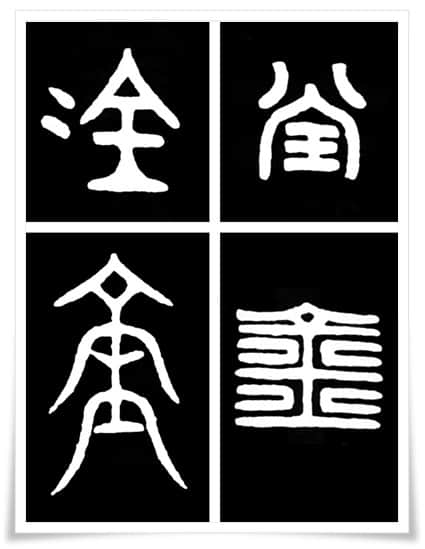
Oblong dots on both sides (sometimes only one side) of the kinbun (金文, きんぶん, i.e. “text on metal”) form of the character 金 imitate the elliptical shape of the two lumps of copper (Figure 2). Note that the two lumps of copper ore were already clearly indicated on the left-hand side of the main body of the character 金 written in oracle bone script (甲骨文, こうこつぶん, kōkotsubun), as shown in Figure 1 (left).
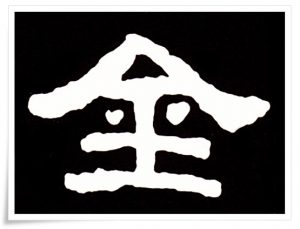
The above would indicate, that those two small lumps of copper were applied is the earliest forms of the character 金 (see Figures 1 and 2). On the 效父簋 (Chinese: Xiào fù guǐ), a small food vessel from the early Western Zhou dynasty (西周, 1046 – 771 B.C.), we read that “the king was offered three (units) of 金 (represented by a form of character 金 with two assisting dots, i.e.: two lumps of copper ore), and he rejoiced”. One needs to realise that copper is a primary ingredient of bronze, and bronze was the most precious metal in ancient China. Bronze vessels were generous gifts from one ruler to another or from a king to an official, or to a military leader who excelled in his service. The character 金 was written on many bronze vessels throughout history, and it often appears in various forms. The kanji 金 has at least four different variants in standard script (楷書, かいしょ, kaisho); you can see some of them in Figure 6.
The character 金 originally meant “metal” (五色の金). Its meaning gradually expanded to include “gold”, and eventually “money”.
>
4. Selected historical forms of 金
Figure 1. Various forms of the character 金 in oracle bone script (甲骨文, こうこつぶん, kōkotsubun, c.a.1600 B.C. – 800 B.C.
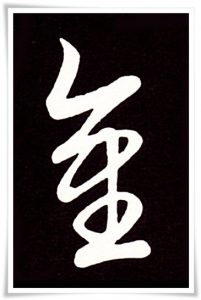
Figure 2. I purposely chose four radically different kinbun (金文, きんぶん, i.e. “text on metal”) forms of the character 金, to show you the rich and complex nature of calligraphy. The top left is a ink rubbing from bronze vessel named 公違鼎 (Chinese: gōng wéi dǐng), dated 1115-1079 B.C., late Shang (商朝, 1600 – 1046 B.C.) dynasty. The other three are rubbings of ancient Chinese seals (mostly golden seals). Seal script (篆書, てんしょ, tensho) used on seals is less rigid and (in a way) more imaginative, as it needs to fit the square frame of the seal, yet it still retains its artistic value. For this reason, seal script used in calligraphy, and the one applied in seal carving art, may differ greatly. Note, that all forms have at least two lumps of copper interwoven into their “design”.
Figure 3. Simple yet powerful clerical script (隷書, れいしょ, reisho) form of the character 金. This ink rubbing comes from the stele 張遷碑 (Chinese: Zhāng qiān bēi), erected in 186 C.E., late Han dynasty (後漢, 25 – 220 C.E.).
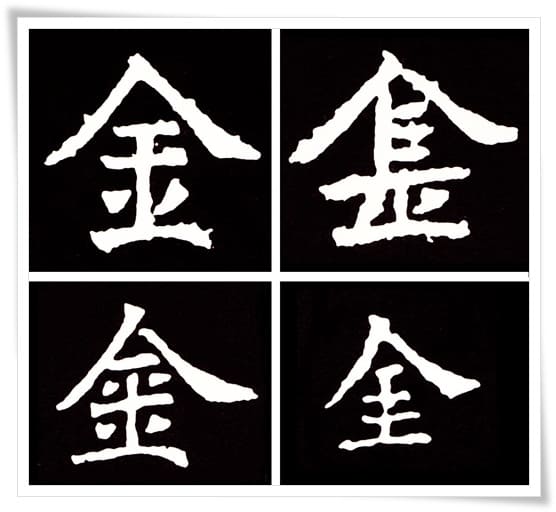
Figure 4. Graceful and dynamic cursive script (草書, そうしょ, sōsho) form of the character 金, found in the 急就章(Chinese: Jǐ jiù zhāng), composed by the Western Jin dynasty (西晉, 265-316 C.E.) scholar and calligrapher 索靖 (Chinese: Suǒ Jìng, 239 – 303 C.E.), who was a grandson of the great 張芝 (Chinese: Zhāng zhī, birth date unknown – 192 C.E.). 急就章 was no less than one of the first Chinese books, aimed at teaching proper forms of characters. The form you see in the picture is a rinsho (臨書, りんしょ, i.e. “copying masterpieces”) attributed to Kūkai (空海, くうかい, 774-835), the Buddhist monk, scholar and poet, who was possibly the greatest Japanese calligrapher of all time.
Figure 5. Ink rubbings of the character 金 in standard script (楷書, かいしょ, kaisho). Again, I chose those forms to show you the variety in calligraphy. 金 has a few kanji variants, and they are quite different from one another. You can see a form from the Tang dynasty (唐朝, 618 – 907) in the top-left corner, the Eastern Wei dynasty (東魏朝, 534 – 550) in the top-right and bottom-right corners; and the Sui dynasty (隋朝, 581-618) in the bottom-left corner. This does not imply that one form of a given character was restricted to a certain dynasty or period in time, they are simply different interesting examples that I chose to highlight the various forms used. It was also not uncommon for ancient calligraphers to use various forms of one character within one text. If a given character appeared more than once, then other character variants were used.
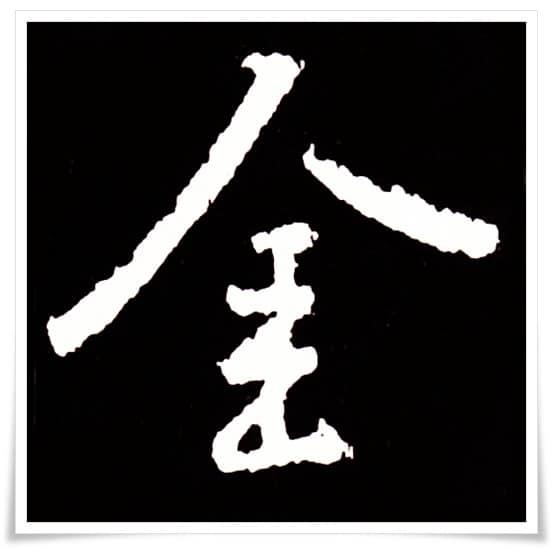
Figure 6. semi-cursive script (行書, ぎょうしょ, gyōsho form of the kanji 金. Ink rubbing from the calligraphy work compilation entitled 集王聖教序 (Chinese: Jí Wáng shèng jiào xù), created on the order of the Emperor 唐太宗 (Chinese: Táng Tài zōng), of the Tang dynasty (唐朝, 618 – 907). Characters for this compilation were selected from the masterpieces of 王羲之 (Wáng Xīzhī, 303 – 361), often referred to as the Sage of Calligraphy (書聖; Chinese: shū shèng), who lived in Jin Dynasty (晉朝, 265 – 420 C.E.).
5. Useful phrases
- お金 (おかね, okane) – money
- 現金 (げんきん, genkin) – cash
- 銀行 (銀行, ginkō) – bank
- 金属 (きんぞく, kinzoku) – metal
- 金魚 (きんぎょ, kingyo) – goldfish
